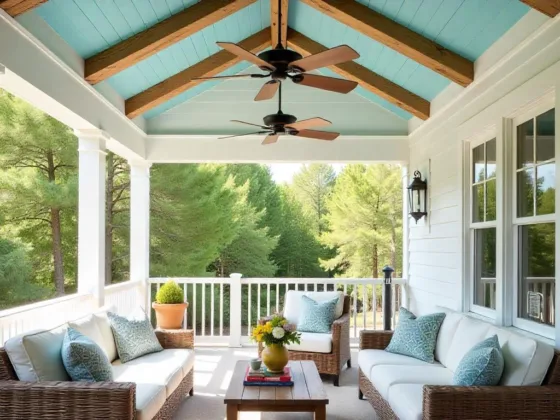Table of Contents Show
Introduction
Building a pergola can transform your outdoor space into a beautiful and functional area. However, understanding permit requirements is crucial to avoid any legal issues during your pergola construction journey. Following the law ensures that your pergola meets local regulations and avoids potential problems.
Ignoring pergola permit requirements can lead to significant issues:
- Fines: Not following building codes can result in hefty fines.
- Legal Troubles: Unauthorized structures may need to be taken down.
- Property Sale Hurdles: Future property sales could be complicated without proper permits.
This guide will help you navigate the legal side of pergola construction, covering everything from understanding when a permit is required to preparing your application efficiently. By the end of this article, you’ll have the knowledge needed to ensure your pergola project complies with all relevant laws and regulations.
Start your project on the right foot by exploring our tips and ensuring you follow all necessary council requirements for pergolas.
As we delve deeper, it’s worth noting that pergolas are set to take center stage as a dominant trend in outdoor living for 2024. With this trend, many homeowners are also looking at ways to enhance their outdoor spaces further. For instance, if you’re considering a wooden deck alongside your pergola, it’s essential to protect your wooden deck from termites with preventative measures and also know how to clean and care for your wooden deck.
Moreover, if you’re planning to incorporate some greenery into your outdoor setup, perhaps through a balcony garden, we have some valuable insights on creating and maintaining a balcony garden box.
Ready to dive in? Let’s get started!
Understanding the Need for a Pergola Permit
When planning to build a pergola, you may wonder, “Do I need a permit for a pergola?” The answer varies based on several factors, such as the size and complexity of your project.
When Is a Permit Required?
A permit for a pergola is usually necessary when:
- The structure is larger than a specific size, usually measured in square footage or height.
- The pergola is connected to an existing building or home.
- There are electrical components or other utilities involved.
- Local laws require permits for all outdoor structures.
Factors Influencing the Necessity of a Permit
Several key factors determine whether you need a permit to build a pergola:
- Size: Larger pergolas often require permits because they can affect property lines and neighboring lots. For instance, a small, straightforward pergola might not need a permit, but bigger installations generally do.
- Complexity: If you’re adding features like electrical work, plumbing, or intricate architectural designs, you’ll likely need to get permits.
Small/Simple vs. Large/Complex Pergolas
Understanding the differences between small/simple and large/complex pergolas can help clarify permit requirements:
- Small/Simple Pergolas: These structures are usually freestanding and built without elaborate features. They’re less likely to need permits, but it’s always best to confirm with local authorities.
- Large/Complex Pergolas: These include attached structures or those with additional functions like lighting, heating, or retractable roofs. Because of their complexity and potential safety issues, these typically require detailed plans and approved permits.
Figuring out whether your pergola needs a permit can seem overwhelming, but breaking down these factors makes it easier. Always check local laws and building codes to make sure you’re following the rules.
If you’re thinking about adding more than just a pergola to your outdoor area, like creating an inviting patio garden, it’s crucial to consider those aspects too when deciding on permit requirements.
Local Regulations and Building Codes: What You Should Know
Consulting your local building department is a crucial first step in your pergola construction journey. Each locality has its own set of regulations and building codes that can significantly influence your project. Ignoring these could lead to complications down the line.
Variability in Regulations Based on Location
Regulations can differ vastly depending on where you live. Urban areas might have stricter codes due to density and safety concerns, while rural locations may offer more leniency. Always check with your local authorities to understand specific requirements.
Common Building Codes for Pergolas
When it comes to common building codes applicable to pergolas, you’ll frequently encounter:
- Height Restrictions: Many areas limit the height of outdoor structures to ensure they do not overshadow neighboring properties or obstruct views.
- Safety Standards: These guidelines ensure that the structure is safe for use, covering aspects such as stability and fire resistance.
Local regulations might also dictate:
- Setbacks from Property Lines: Rules about how far your pergola must be from the property boundary.
- Material Specifications: Requirements for using certain materials that meet environmental or safety standards.
Adhering to these guidelines not only ensures compliance but also enhances the durability and safety of your pergola.
Zoning Laws and Their Impact on Your Pergola Design
Understanding zoning laws is crucial when planning your pergola construction. These regulations dictate how land and structures can be used in specific areas, and they vary widely based on location. Local governments set zoning laws to ensure that land use is organized and safe.
Key Aspects of Zoning Regulations for Pergolas:
- Permitted Uses: Zoning laws define what types of structures can be built in different areas. For instance, residential zones may have different rules compared to commercial ones.
- Setback Requirements: These are the minimum distances that your pergola must be from property lines, buildings, or streets. Setbacks help maintain privacy, allow for emergency access, and ensure a uniform appearance in neighborhoods.
- Maximum Height Restrictions: Many zoning codes specify how tall structures like pergolas can be. This is particularly important if you plan to build a large or elaborate pergola.
Zoning regulations significantly affect the design and placement of your pergola. Here’s how:
1. Design Flexibility:
- Height Limits: If your local zoning laws impose strict height restrictions, you might need to opt for a shorter pergola design. This could influence the overall aesthetic and functionality.
- Footprint Limits: Some zones have limitations on the size of additional structures relative to the lot size. This may necessitate choosing a more compact design or rethinking the layout to comply with regulations.
2. Placement Constraints:
- Property Line Setbacks: You may need to adjust the pergola’s position to meet setback requirements. For example, if your zoning laws require a 10-foot setback from the property line, you cannot place your pergola any closer than that.
- Proximity to Other Structures: Zoning regulations might restrict how close your pergola can be to other buildings on your property, such as garages or sheds, affecting where you can place it.
Navigating these zoning regulations is integral to ensuring that your pergola project proceeds without legal hiccups. Consulting local zoning maps and speaking with city planners can provide clarity on specific requirements for your area.
When planning to build a pergola, it’s important to consider the role of your homeowners association (HOA). HOAs often have specific guidelines and restrictions regarding outdoor structures to maintain a cohesive look within the community.
Role of HOAs in Regulating Outdoor Structures
HOAs generally aim to preserve property values and neighborhood aesthetics. This means they have the authority to regulate various aspects of home improvements, including the addition of pergolas. The HOA approval process typically involves:
- Submission of detailed plans: You’ll need to provide architectural drawings or site plans that detail the design, size, and placement of your pergola.
- Review period: The HOA board will review your submission against their guidelines and community standards.
- Approval or denial: Based on their review, your project may be approved as-is, approved with modifications, or denied.
Potential Additional Aesthetic Guidelines Imposed by HOAs
Aside from structural regulations, HOAs might impose aesthetic guidelines that could impact your pergola’s design. These can include:
- Material restrictions: Some HOAs require that outdoor structures use specific materials that match or complement existing buildings.
- Color schemes: There might be rules regarding acceptable color palettes for your pergola to ensure it aligns with the community’s aesthetic.
- Height and size limitations: Just as local regulations might limit height and size, so too can HOA guidelines.
Adhering to these guidelines not only ensures compliance but also fosters good relations with your neighbors and maintains the visual harmony of your community. Ignoring HOA rules can lead to fines or even legal action requiring you to alter or remove your pergola.
Understanding both local building codes and HOA requirements is crucial before starting construction. This helps avoid potential roadblocks and ensures a smoother process from planning to completion.
The Pergola Permit Process: A Step-by-Step Guide
Navigating the permit process for a pergola can seem daunting, but breaking it down into manageable steps can make it much more approachable. Understanding the necessary documentation and plans is crucial to ensuring a smooth application process.
Required Documentation and Plans for Your Pergola Permit Application
When applying for a permit required for pergola construction, you need to gather several key documents. These typically include:
- Site Plan: This document provides a detailed layout of your property, showing the location of existing structures and where you plan to build your pergola. It should include dimensions, distances from property lines, and any relevant topographical features.
- Architectural Drawings: These are detailed drawings that illustrate the design and construction details of your pergola. They often include:
- Elevation Views: Show different sides of the pergola, giving a clear picture of its height and appearance.
- Structural Details: Highlight materials, dimensions, and construction methods used.
- Foundation Plan: If your pergola requires footings or other types of foundation work, this plan will detail those aspects.
- Property Deed or Proof of Ownership: Some municipalities require proof that you own the property where the construction will take place.
- Survey Plat: A certified survey showing property boundaries may be required to ensure compliance with setback requirements.
- Engineering Reports: For more complex or larger structures, you might need an engineering report to verify structural integrity.
Gathering these documents efficiently often involves working closely with contractors or architects. They can provide professional site plans and architectural drawings that meet local building code requirements.
Timeline Expectations: How Long Will It Take to Get Your Pergola Permit?
The timeline for getting a permit can vary based on several factors including location, complexity of the project, and time of year. Here’s what you can generally expect:
1. Initial Research Phase:
- Consulting local building department
- Gathering required documents
- Creating site plans and architectural drawings
This phase can take anywhere from one week to several weeks depending on how quickly you gather information and documentation.
2. Permit Application Submission:
- Submitting your complete application package Once submitted, initial review times vary but typically take between one to two weeks.
3. Review Process:
- The building department reviews your application for compliance with local codes and regulations. They may request additional information or modifications to your plans. This stage can add another one to three weeks depending on the complexity of your project and the backlog at the building department.
4. Approval or Denial Notification:
- After review, you’ll receive either approval or a request for further adjustments. If approved, you can proceed with construction. If denied or if adjustments are needed, additional time will be required to address concerns.
Understanding these steps helps set realistic expectations about project timelines. Efficiently organizing documentation not only smoothens the permit process but also ensures you’re well-prepared for any additional requests from the building department.
Timeline Expectations: How Long Will It Take to Get Your Pergola Permit?
Understanding the timeline expectations for permit approval is crucial in planning your pergola project effectively. The permit process for a pergola can vary significantly depending on local regulations and the complexity of your design.
To provide a general idea:
1. Initial Research and Preparation
Timeframe: 1-2 weeks
This step involves contacting local authorities to understand specific requirements and gathering necessary documentation like the site plan for a pergola permit application.
2. Application Submission
Timeframe: A few hours to a couple of days
Preparing and submitting the complete application package, which includes detailed site plans, architectural drawings, and any other required documents.
3. Review Period
Timeframe: 2-6 weeks
During this phase, local building departments review your application. They may request additional information or modifications to ensure compliance with all regulations and codes.
4. Approval or Revisions
Timeframe: Up to 2 weeks
If revisions are needed, you’ll have to update your plans accordingly. Once everything meets the requirements, you’ll receive the permit approval.
5. Permit Issuance
Timeframe: Immediate upon final approval
After approval, the permit is issued, allowing you to commence construction.
Remember, these timelines are approximate and can be influenced by factors such as seasonal demand, staff availability at the permitting office, and specific local processes. It’s always best to check with your local building department for more accurate estimates tailored to your location.
By understanding these steps in the step-by-step guide through the permitting process, you can better manage your project timeline and avoid frustrating delays.
Consequences of Skipping the Pergola Permit: Why Compliance Matters
Building a pergola without obtaining the necessary permits might seem like a shortcut, but it can lead to significant repercussions. Here’s why compliance is crucial:
Potential Fines Associated with Unpermitted Construction
Local authorities take building regulations seriously. Constructing a pergola without a permit can result in hefty fines. These penalties vary by location, but they often far exceed the cost and effort of obtaining the permit initially. Fines can also compound daily until compliance is met, making it an expensive oversight.
Risks Involved When Selling Property Without Proper Permits
When it comes time to sell your property, unpermitted structures can become a major hurdle. Potential buyers may be wary of purchasing a home with non-compliant additions due to potential future legal issues or additional costs to bring the structure up to code. Real estate transactions often require proof that all modifications are permitted and meet local building codes. Missing permits can delay sales or reduce your property’s market value.
Safety Concerns Arising from Non-Compliance
Permits exist not just for bureaucratic reasons but to ensure safety standards are met. An unpermitted pergola may not adhere to structural or safety codes, posing risks such as collapse or injury during severe weather conditions. Compliance ensures that your pergola is constructed safely, protecting both your family and guests.
Skipping the permitting process might save time initially, but understanding the potential penalties for not obtaining a permit for a pergola underscores the importance of adhering to legal requirements. This proactive approach not only avoids financial and legal pitfalls but also ensures your pergola is safe and reliable.
Different Types of Pergolas and Their Permit Implications: What You Need to Know Before Building
When considering the construction of a pergola, understanding the different types and their respective permit implications is essential. The distinction between freestanding vs attached pergolas regarding permits needed can significantly influence your planning process.
Freestanding vs Attached Pergolas
Freestanding Pergolas:
- Definition: Stand-alone structures not attached to any existing buildings.
- Permit Requirements: Typically, local regulations for freestanding pergolas are less stringent. However, permits might still be necessary depending on size and height.
- Considerations: Since they are independent structures, they often require site plans indicating their placement in relation to property lines and other structures. If you’re considering building a freestanding pergola on a concrete patio, there are helpful resources available such as this guide that can provide valuable insights.
Attached Pergolas:
- Definition: Structures connected directly to an existing building, such as a house or garage.
- Permit Requirements: Often subject to stricter regulations due to their attachment to another structure. This can include requirements for structural integrity and adherence to building codes.
- Considerations: These pergolas usually necessitate more detailed architectural plans and may need additional inspections during construction.
Using Pre-built Kits: A Convenient Option with Potential Permitting Advantages
Pre-built pergola kits offer a streamlined approach that can simplify the permitting process. Here’s why:
- Standardized Designs: Many pre-built kits are designed to comply with common building codes and regulations. This means they often come with pre-approved structural details that meet local requirements.
- Comprehensive Documentation: Kits typically include comprehensive documentation such as assembly instructions, structural calculations, and material specifications. These documents can be directly submitted with your permit application, saving time in creating custom plans.
- Ease of Approval: Building departments may find it easier to approve standardized designs from reputable manufacturers compared to custom-built pergolas. This could potentially expedite the permit approval process.
- Pre-vetted Materials: Materials used in pre-built kits are often pre-vetted for quality and compliance, reducing the chances of running into issues during inspection stages.
By understanding the nuances between freestanding and attached pergolas, as well as leveraging the advantages of pre-built kits, you can navigate the legal side of pergola construction with greater ease. This knowledge ensures you’re better prepared to comply with local regulations, ultimately protecting your investment in your outdoor space.
Preparing Your Application: Gathering Documentation Efficiently
Gathering necessary documents efficiently for permits can make the difference between a smooth approval process and frustrating delays. Here are some actionable tips:
1. Start with a Checklist
- Create a detailed list of all required documents like site plans, architectural drawings, and any other specifications.
- Ensure you have everything listed before starting the application process.
2. Involve Contractors Early
- Professional contractors often have experience with permit applications and can provide essential documents quickly.
- They can also offer guidance on local requirements and ensure your designs meet necessary standards.
- Visit your local building department’s website or office to gather accurate information about specific document requirements.
- Some municipalities offer downloadable checklists or guidelines to help streamline the process.
4. Organize Electronically
- Use digital tools like cloud storage or project management apps to keep all your documents in one place.
- This not only helps in easy retrieval but also makes sharing with contractors or officials hassle-free.
5. Double-Check Everything
- Before submission, review all documents to ensure they meet the outlined specifications.
- Missing or incorrect information can result in delays or rejection of your permit application.
By following these steps, you can ensure that gathering necessary documents efficiently for permits becomes a straightforward part of your pergola construction journey.
Legal Assurance Through Permits: Protecting Your Investment in a Pergola
Benefits of Having a Legally Constructed Pergola
1. Enhancing Property Value
A legally constructed pergola can significantly boost your property value. When potential buyers see that all structures on the property are compliant with local regulations, it instills confidence and often results in higher offers.
- Market Appeal: Buyers are more likely to purchase a home with fully permitted structures.
- Long-Term Investment: Proper documentation protects you from future legal issues, making it a sound investment.
2. Maintaining Neighborhood Relations
A legally compliant pergola also helps maintain good relations with neighbors and the community. Unpermitted structures can lead to disputes and complaints, which are easily avoidable with the proper permits. To understand more about the implications of building without a permit, it’s essential to consider the potential consequences.
- Avoiding Disputes: Clear adherence to local building codes prevents conflicts with neighbors over boundary and zoning issues.
- Community Harmony: Following HOA guidelines ensures your pergola aligns with the neighborhood’s aesthetic standards.
3. Legal Benefits
Obtaining the necessary permits provides several legal advantages:
- Liability Protection: A permitted structure is inspected for safety, reducing liability concerns.
- Insurance Coverage: Insurance companies are more likely to cover damages to permitted structures, offering you peace of mind.
By understanding and adhering to permit requirements, you’re not just following the law; you’re making a wise investment in your home’s future.
Conclusion
Understanding Permit Requirements: Navigating the Legal Side of Pergola Construction is crucial for a smooth and compliant building process. Doing thorough research on your specific permit needs ensures you avoid potential legal issues and costly fines.
To simplify the process:
- Know Your Local Regulations: Each area has unique building codes and zoning laws.
- Consult Your HOA: If applicable, check for additional guidelines from your Homeowners Association.
- Prepare Thoroughly: Gather all required documentation early to streamline your permit application.
By staying informed and prepared, you protect your investment and contribute positively to your neighborhood.
FAQs (Frequently Asked Questions)
Whether you need a permit for a pergola depends on various factors such as its size and complexity. Generally, larger or more complex structures require permits, while smaller, simpler pergolas may not.
Local regulations can vary widely based on your location. It’s crucial to consult your local building department to understand specific building codes that may apply to height restrictions and safety standards for pergolas.
Zoning laws can impose maximum height restrictions and dictate the placement of your pergola on your property. Understanding these regulations is essential to ensure compliance and avoid potential issues.
To apply for a pergola permit, you’ll typically need to submit documentation such as site plans and architectural drawings. These documents help local authorities assess your proposed structure.
Failing to obtain the necessary permits can lead to penalties such as fines, complications when selling your property, and safety concerns related to non-compliance with building codes.
Yes, freestanding and attached pergolas often have different permit requirements. Freestanding structures may have more lenient regulations compared to attached ones, which might be subject to stricter compliance due to their connection to existing buildings.










